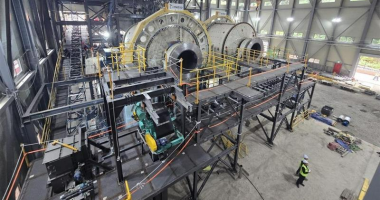As governments around the world look towards green energy and the not-so-distant electric future, investors in the global mining industry have been on tenterhooks as the sector faces lobby groups and changing legislation.
However, recent important socio-economic and legal developments across Chile have opened up a significant blue-sky mining investment opportunity in the country, which is already an established global resources powerhouse.
And the world’s biggest miners have noticed.
Chile, is the world’s leading copper producer, controlling roughly 28 per cent of global production, and has the largest copper reserves by far, home to some 200 million metric tonnes of copper. Chile has held its position as the world’s leading copper producer for five decades.
Meanwhile, Chile is the second-largest lithium producer on the planet, accounting for roughly 23 per cent of global lithium and currently holding over 50 per cent of the world’s lithium reserves.
What’s more, the Chilean government this year took some major steps towards improving the country’s position on the global resources stage.
In May, a constitutional Chilean assembly rejected a major overhaul to mining rights in the country that would give the state more control over its lithium and copper assets.
The proposed changes faced fierce opposition from the country’s mining sector, and while some made it across the line, major resources groups put their money where their mouth was to showcase how valuable the industry could truly be for the South American nation.
BHP, for example, said in March it was committed to investing over US$10 billion (A$15 billion) in Chile to fuel growth across the nation, but only under very specific regulatory and fiscal situations.
BHP said it could only invest in Chile’s growth if it knew it had fiscal stability, legal certainty, and a clear pathway to mining permits in the nation.
It’s likely such a dramatic commitment from one of the world’s largest miners helped keep the major regulatory overhaul at bay.
The Chilean government has now changed tack and taken steps towards supporting its resources industry: in September, Chile’s leaders announced a significant plan to boost investment in the country over 2023 to address its weak economy.
The “Invest in Chile” plan includes better access to financing and tax advantages for private investments. It will also give new copper mining projects a five-year exemption from a proposed new tax on the value of the mine’s output.
On top of all this, Chile’s government announced it planned to reopen foreign investment offices in Europe and North America and create public-private task forces in the construction, energy, transport and mining sectors.
Essentially, the new investment plan protects and promotes Chile’s prolific mining industry.
The country attracted investments in exploration of US$653.5 million in 2019, when it also ranked fourth in terms of total company exploration budget on a global scale. During the same year, the mining sector’s contribution to the country’s GDP was 11 per cent and represented over half of the country’s total exports.
Now, with the new government incentives, global investment in Chile’s mining sector is only set to grow.
With BHP committed to the nation’s growth — and not to mention South 32’s (S32) recent US$1.55 billion purchase of a 45 per cent interest in Chile’s Sierra Gorda copper mine — it’s no wonder investors are turning to the nation for a blue-sky opportunity against a backdrop of global mining tension.
Growth prospects for ASX investors
One key market player, Culpeo Minerals (CPO), has already been showing excellent results from exploration work at its Lana Corina project.
Recently, Culpeo discovered a high-grade copper deposit on the property, with several holes defining a large body of copper mineralisation.
Its next steps will now include completing its current surface mapping to define the 13 high-priority breccia targets, indicating a large copper porphyry system.
The company has two more assets: the Las Petacas project and the Quelon project. Both areas have seen historical mining and Culpeo has been able to identify bodies of copper mineralisation within both projects.
Of course, copper may hold itself as the king metal in Chile, but precious metals such as gold are also being explored and produced in large quantities, with U$930 million of gold exports in 2020.
Tesoro Gold (TSO) has made a major new gold discovery and unearthed the first Intrusive Related Gold System (IRGS) in Chile. Tesoro’s El Zorro gold project is strategically located with easily accessed and established infrastructure including roads, power and water.
El Zorro is district-scale and covers more than 600 square kilometres of highly prospective geology in the Atacama region of Chile, roughly 800 kilometres north of the Chilean capital, Santiago and 140 kilometres by road from the regional capital, Copiapo.
What’s the bottom line?
The takeaway for investors is this: Chile is a blue-sky investment opportunity grounded in mining.
Whether it be the present, near future, or distant future, one thing is for sure: Chilean miners and explorers are here to stay.






